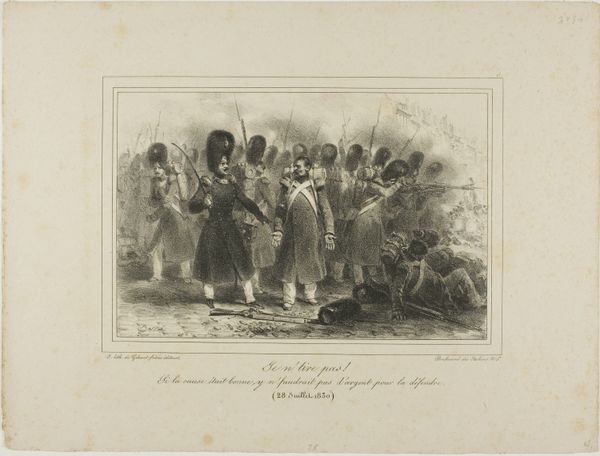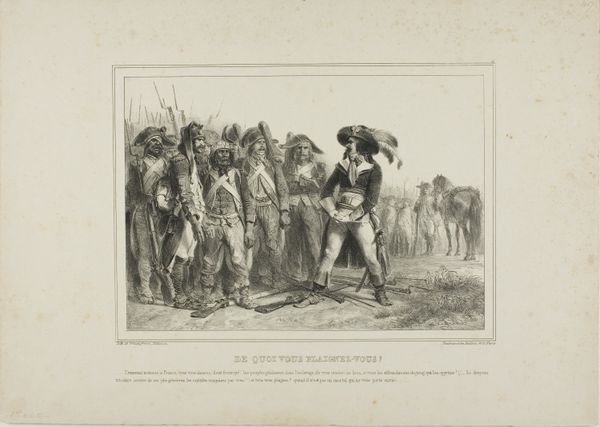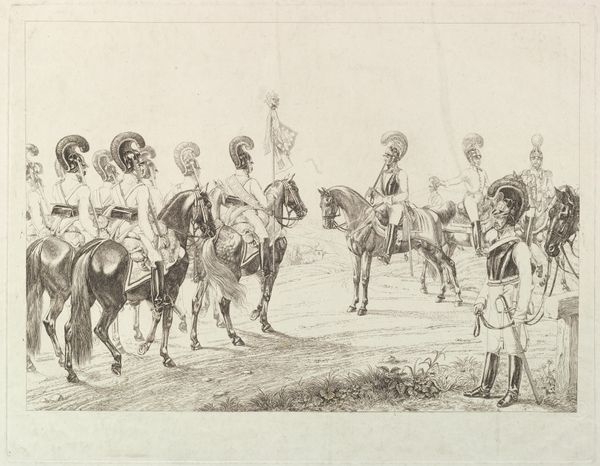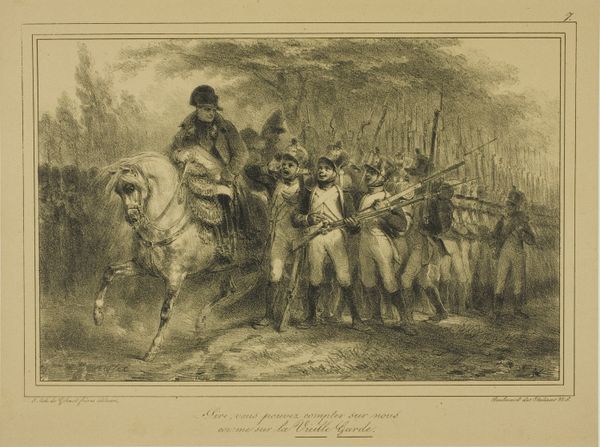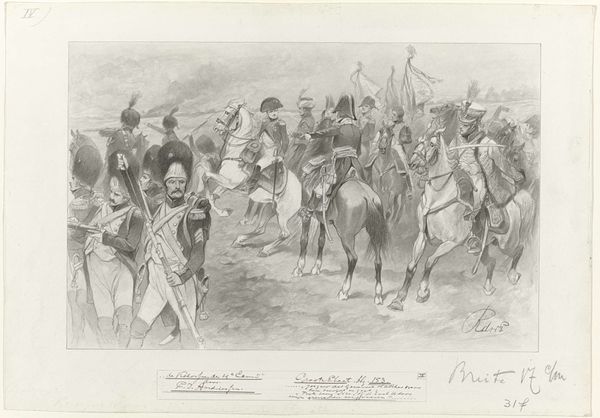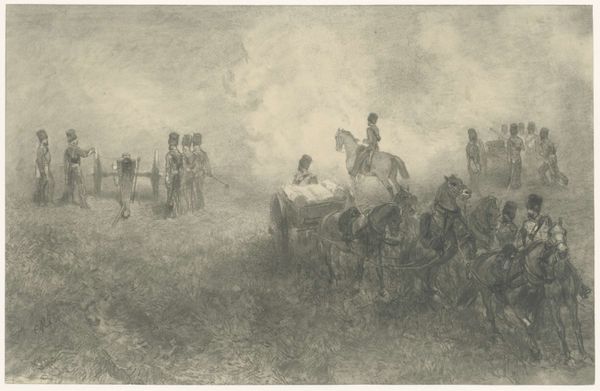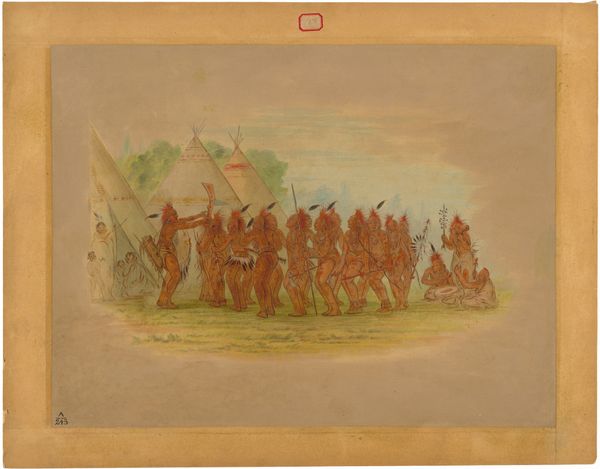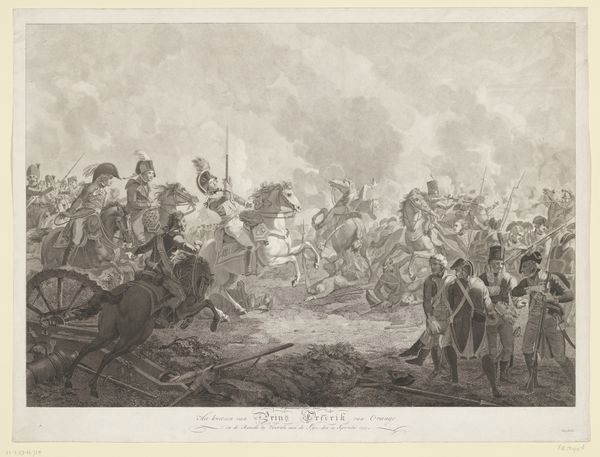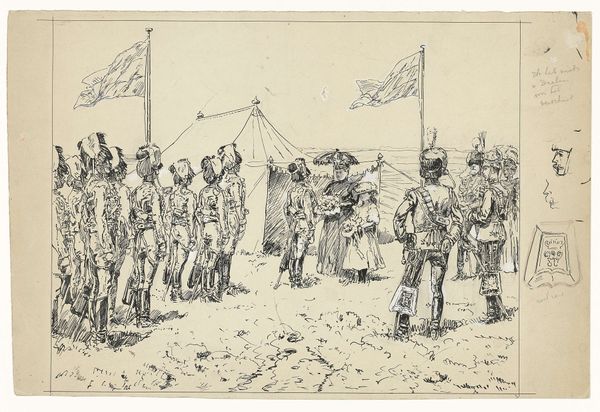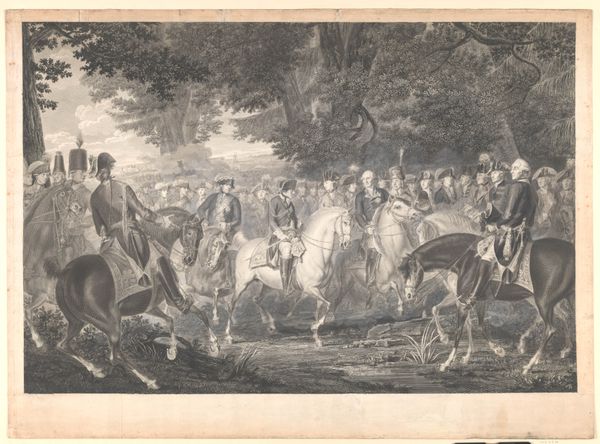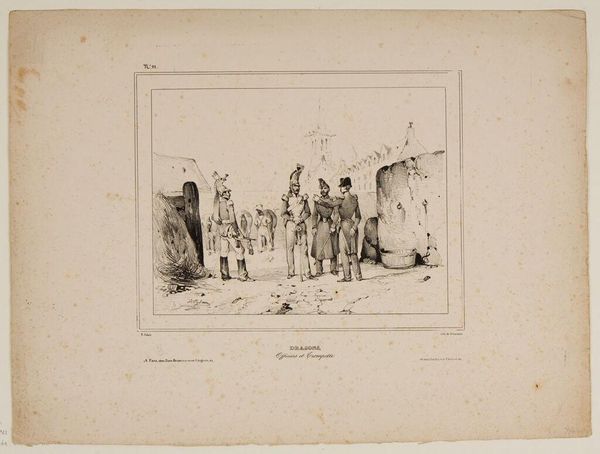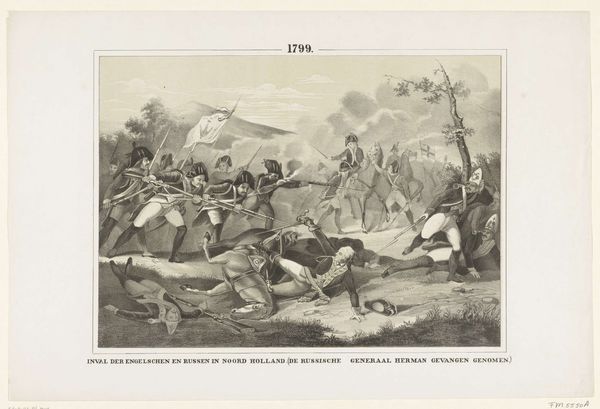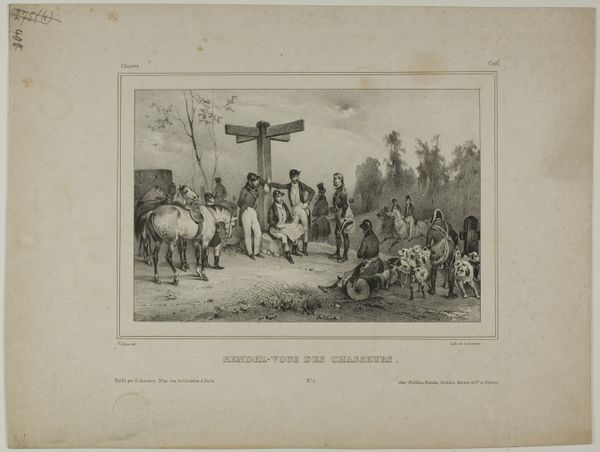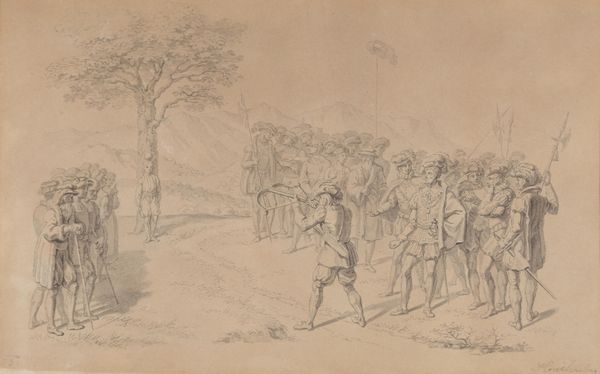
Ontwerp voor illustratie voor De Kolossus der Negentiende Eeuw door P.J. Andriessen (Groot Plaat, blz. 104); scène uit het leven van Napoleon 1877 - 1942
0:00
0:00
drawing, pencil
#
drawing
#
pencil sketch
#
landscape
#
pencil
#
history-painting
#
academic-art
#
realism
Dimensions: height 230 mm, width 336 mm
Copyright: Rijks Museum: Open Domain
Editor: This is a pencil drawing entitled "Ontwerp voor illustratie voor De Kolossus der Negentiende Eeuw door P.J. Andriessen," dating from 1877 to 1942, by George Lodewijk de Wetstein Pfister. The scene shows soldiers marching past, seemingly indifferent to Napoleon standing at the edge of a wood. It feels almost like a stage play. What stands out to you in this composition? Curator: Initially, observe how Pfister uses line and form to structure this composition. The regimented lines of the soldiers contrast sharply with the more gestural rendering of the landscape and the figure of Napoleon. Editor: It’s true, Napoleon looks almost superimposed onto the scene. Curator: Precisely. That disjunction calls attention to the picture plane itself. Note too the subtle variations in tonal value across the work. How do they influence the viewer's gaze? Editor: I think the lighter areas around Napoleon draw your eye to him, even though he's small. Is there some theoretical underpinning you find particularly relevant here? Curator: Considering semiotics, one might analyze Napoleon as a signifier of power, visually divorced from the action of the soldiers, signifying perhaps the burden of leadership or the distance between commander and the rank and file. What, then, might the rigid, repeated forms of the soldiers themselves signify? Editor: Perhaps their lack of individual agency, reduced to components in a larger, impersonal system? Curator: Indeed. And how does that understanding influence your interpretation of the image as a whole? Editor: I think I now see it less as a straightforward historical scene, and more as a commentary on power structures. I initially only noticed what it depicted but I missed so much nuance. Curator: Excellent. Understanding the intrinsic formal qualities unlocks layers of meaning within the image.
Comments
No comments
Be the first to comment and join the conversation on the ultimate creative platform.
